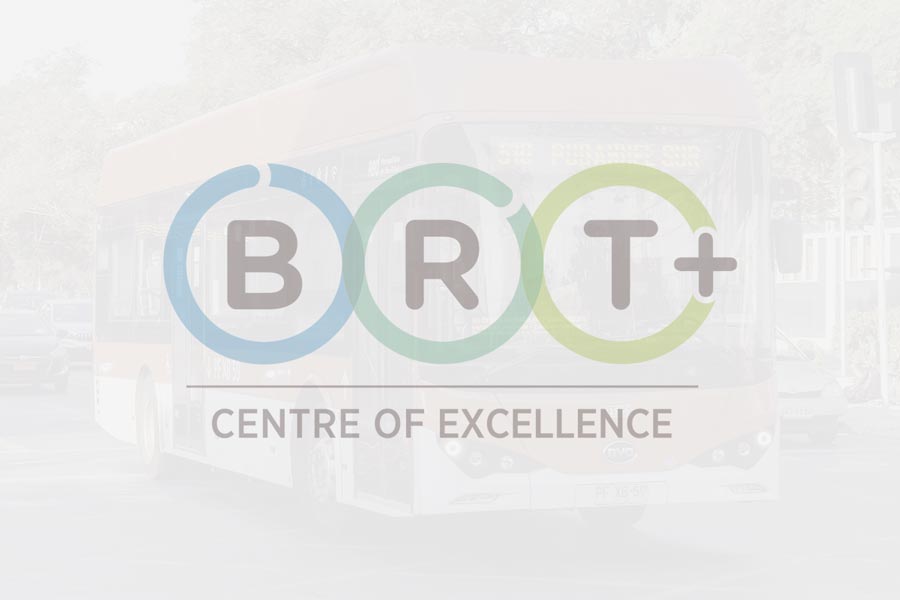Source: The Washington Post
 Montgomery County is considering building a 150-mile network of dedicated bus lanes to move its growing population more quickly while easing traffic congestion, but even supporters won’t use the “B” word.
Montgomery County is considering building a 150-mile network of dedicated bus lanes to move its growing population more quickly while easing traffic congestion, but even supporters won’t use the “B” word.
Planners, developers and local officials analyzing how to build and pay for the express bus network say they are acutely aware that buses conjure up images of slow, unreliable, second-class transit. Their pitch: Picture these buses as trains on rubber tires.
“We want riders to view it much more like rail,” said Dan Wilhelm, who oversees transportation issues for the Montgomery County Civic Federation and serves on a county transit task force.
Supporters say that Bus Rapid Transit, or BRT, would provide the convenience, comfort and reliability of light rail without the heftier cost. Plush buses would run frequently, mostly in their own lanes in the middle of local streets, and get longer green signals at intersections. Stations spaced about a half-mile apart would have rain shelters and ticket kiosks. The buses would also be low to the ground to provide fast, level boarding directly from platforms.
BRT is the fastest, most affordable — and perhaps only — way to make a significant dent in traffic, advocates say.
“There is no other way you’re going to do it,” said Montgomery Council member Marc Elrich (D-At Large), who has been pushing for BRT since 2007. “You don’t have money to build a rail system. You’re not going to bulldoze neighborhoods to build new roads.”
Montgomery officials aren’t the only ones looking into BRT’s feasibility. Regional transportation planners have proposed building a network of high-occupancy toll lanes along local highways and major arterial roads that buses and toll-paying vehicles would use.
Toll revenue would pay for construction and subsidize the express bus service, said Ronald F. Kirby, transportation planning director for the Metropolitan Washington Council of Governments.
“The driver here, really, is what can we do in the next 20 years that would make a significant impact?” Kirby said. “These are things that are doable — not easy, but doable.”
If Montgomery officials find the money for their own local network — and that’s a big “if” in today’s tight economic climate — they say all 150 miles of busway could be operating within a decade. One preliminary study predicted that the network would cost $2.5 billion in today’s dollars to build, excluding land acquisition. Although that price would make it one of the more costly transportation projects in the Washington region, supporters say, the money would spread further. Its estimated per-mile cost of $16.6 million would pale in comparison to about $120 million per mile to build light rail and $230 million to $270 million per mile to extend Metrorail.
The idea is gaining traction among key political players who are frequently at odds on transportation solutions. They include planners seeking to accommodate population growth, local officials hoping to lure new jobs, environmentalists trying to reduce carbon emissions, civic groups wanting traffic relief, businesses trying to improve workers’ commutes and developers who want to get building plans approved.
Montgomery officials say they also fear the county will lose jobs and investment to Northern Virginia, where a Metrorail extension is under construction, the Capital Beltway is getting 14 miles of new high-occupancy toll lanes and Tysons Corner is being redeveloped into a more walkable, transit-oriented community.
Supporters say Montgomery could form a “Science & Health Triangle” with BRT connecting major employers, such as the National Institutes of Health and Walter Reed National Military Medical Center in Bethesda, the emerging “science city” in Gaithersburg and the Food and Drug Administration complex in the White Oak area of Silver Spring. Developers in North Bethesda’s White Flint area say BRT would attract businesses and residents to clusters of high-rises being planned.
“People in high-rise buildings expect to drive less, and they need accessibility,” said Evan Goldman, a vice president for Rockville-based Federal Realty, which plans to redevelop the Mid-Pike Plaza shopping center in North Bethesda into about a dozen high-rises.
Even with growing support, Montgomery’s BRT proposal is still in its infancy, and much more detailed engineering will be necessary to determine routes and station locations as well as whether streets could accommodate a single, reversible bus lane or a double busway. Opposition often surfaces during that more detailed phase of planning, when residents learn who would lose parts of front yards. Task force members said they will recommend that bus lanes not take asphalt from motorists, which would snarl traffic even more.
The biggest question will be how to pay for it.
The task force appointed by Montgomery County Executive Isiah Leggett (D) is expected to have a financial plan ready by February. Elrich said he expects most of a BRT network would be paid for with local money. That would include paying off long-term bonds through an additional tax on commercial property owners who would benefit from the system, similar to special taxing districts in Northern Virginia that are helping to fund construction of the Metrorail extension to Dulles International Airport.
The BRT plans are separate from a proposed 16-mile Purple Line light rail link between Bethesda and New Carrollton and a 14-mile Corridor Cities Transitway being planned for the Interstate 270 corridor in upper Montgomery. State transit officials plan to compete for federal and state funding for both.
Key to BRT’s success, local officials say, will be finding enough money to build and operate a system that will remain fast and reliable enough to lure motorists onto buses. Critics of BRT have said some of the 20 or so other U.S. transit agencies that operate what they call BRT lines erred on the cheap side, such as leaving buses mixed with traffic and giving riders little extra comfort or convenience.
Montgomery’s BRT advocates say they would market their BRT as premium public transit. David Anspacher, a senior planner on one of the county’s BRT studies, said that built correctly, BRT shouldn’t be a tough sell.
“When folks see buses running down Rockville Pike while traffic is stopped,” Anspacher said, “that will be our best marketing.”
The Montgomery County Planning Department will hold a community meeting about its BRT study from 5:30 to 8:30 p.m. Oct. 24 at its headquarters, 8787 Georgia Ave. in Silver Spring.
¿Comments? ¿Opinions? ¿Similar News? Send them to us!













